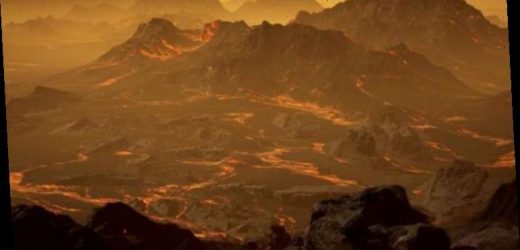European Space Observatory discusses ‘Stranger Exoplanets’
When you subscribe we will use the information you provide to send you these newsletters.Sometimes they’ll include recommendations for other related newsletters or services we offer.Our Privacy Notice explains more about how we use your data, and your rights.You can unsubscribe at any time.
Experts have discovered a super-Earth ‘just’ 26 light years from Earth, which could lead experts to signs of alien life. The planet is known as Gliese 486b and has mass of 2.8 times that of Earth’s.
Gliese 486b, which was discovered using the 1.52m Carlos Sánchez Telescope at the Teide Observatory, is not itself a candidate to home life.
The surface of the planet is 430 degrees Celsius, and due to its close proximity to its host star, it will be constantly doused in radiation.
However, due to its similarities with Earth – with it being made up of rock and having a metallic core – scientists believe it could be a great stepping stone to find alien life elsewhere.
One of the reasons is because it is a “transiting” planet.
These planets pass in front of their host star, from the perspective of Earth, which make it visible to scientists hoping to examine its atmosphere.
Due to the extreme heat of Gliese 468b, the atmosphere has been “puffed up” which makes it easier to analyse.
By analysing the atmosphere of Gliese 468b, scientists will be able to look at what gases are and are not present on the planet, and can use this information to compare with other exoplanets.
Astrophysicist and study co-author Jose Caballero of Centro de Astrobiologia in Spain said: “We say that Gliese 486 b will instantaneously become the Rosetta Stone of exoplanetology – at least for Earth-like planets.
“All that we learn with the atmosphere of Gliese 486 b and other Earth-like planets will be applied, within a few decades, to the detection of biomarkers or biosignatures: spectral features on the atmospheres of exoplanets that can only be ascribed to extraterrestrial life.”
Ben Montet, a co-author of the study, added: “This is the kind of planet we’ve been dreaming about for decades.
“We’ve known for a long time that rocky super-Earths must exist around the nearby stars, but we haven’t had the technology to search for them until recently.
“This finding has the potential to transform our understanding of planetary atmospheres.
DON’T MISS
NASA Mars rover landing: What is the goal of the Perseverance mission?
UFO sighting: Bizarre object spotted in live French TV broadcast
SpaceX CEO Elon Musk on UFOs: ‘I’d know if there were aliens’
“Gliese 486b is the type of planet we’ll be studying for the next 20 years.”
The research, led by Trifon Trifonov, an astronomer at the Max Planck Institute for Astronomy at Heidelberg, Germany, will pave the way for a greater understanding of exoplanets – planets outside of the solar system.
More advanced telescopes such as NASA’s James Webb Space Telescope (JWST), which will launch in October to replace Hubble, will help experts get an even closer look at a distant planet’s atmosphere.
JWST will be able to accurately measure the content of water, carbon dioxide and other components in the atmosphere of an exoplanet.
Dr Trifonov said: “The results we may obtain with them will help us to get a better understanding of the atmospheres of rocky planets, their extension, their very high density, their composition, and their influence in distributing energy around the planets.”
Source: Read Full Article






